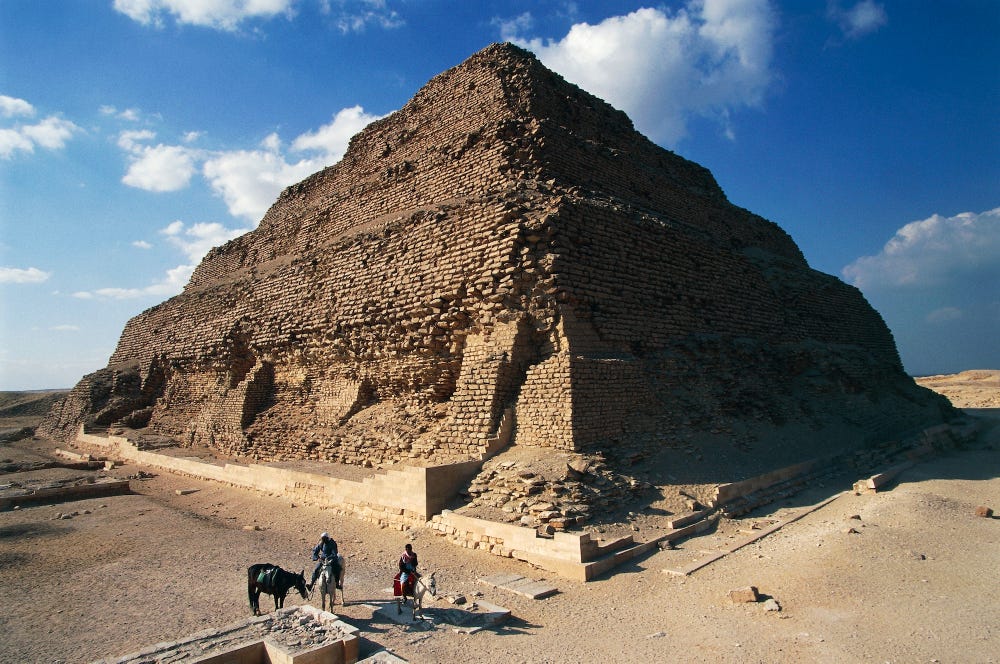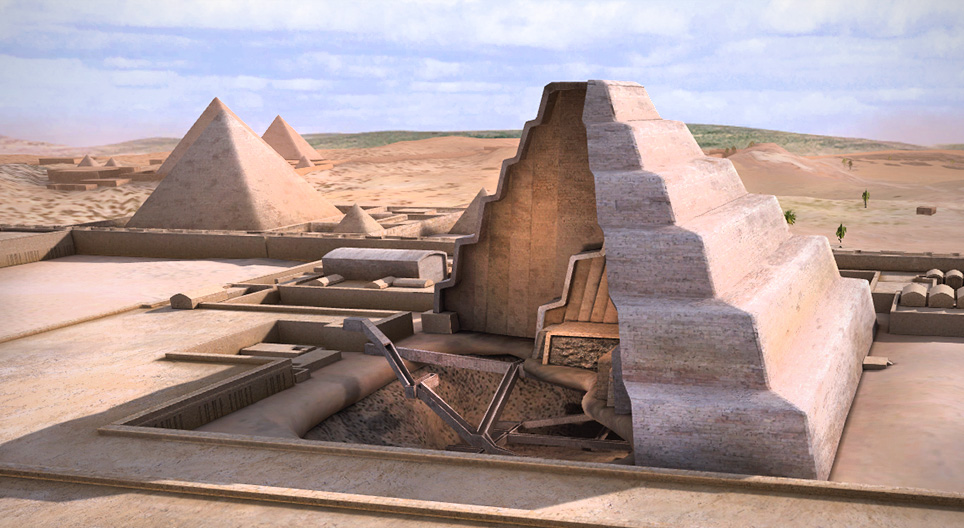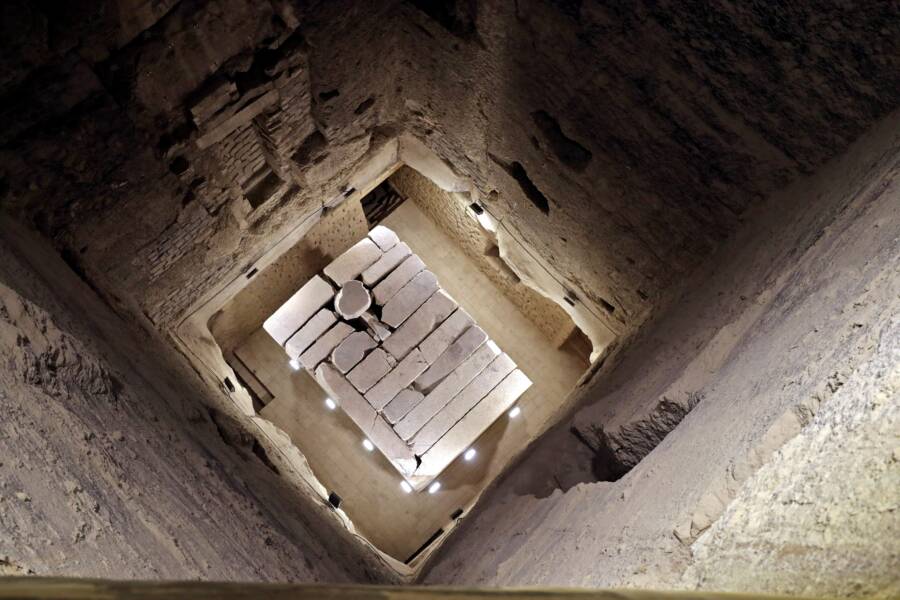The Pyramid Of Djoser

The funerary complex of Djoser, better known by the generic name of step pyramid, is a funerary structure erected in the necropolis of Saqqara, northeast of the ancient city of Memphis.
It was erected for the burial of Djoser, ruler of the III dynasty, by its architect Imhotep.
The pyramid is the main structure of a vast funerary complex.
Considered the oldest Egyptian pyramid, it consists of six mastabas (of decreasing size) built one on top of the other, which indicates that the project might’ve changed during construction.
However, it’s also possible that Djoser decided to build the monument around a pre-existing, older structure.
The base structure is in fact really different from the overall style of the pyramid.

The original building had a height of 62 meters and a base of 109 × 125 meters, and limestone was used for its construction.
It was covered with white limestone blocks of Tura carefully arranged in what will later become the decorative motif on the facade of the building.
The tip of the pyramid had a terrace in place of the pyramidion and the whole appeared just like the sacred staircase that allowed the soul of the sovereign to ascend to heaven.
On the north side, there’s an entrance that opens onto a north-south oriented descent that leads to a well, once barred with a 3-ton block and which leads into a 4 meters high chamber covered in pink granite.
The funerary apartment is decorated with thousands of tiles, set in the yellow limestone of the walls, representing bundles of rushes with white stone moldings, imitating the ropes that bound them, and djed pillars.
At the base of the pyramid, on the east side, there are 11 wells from whose bottom there are further galleries that were the burial places of royal princesses and infants and where fragments of gilded wood, finely chiseled vases, and an alabaster sarcophagus containing the remains of a royal child.
Although the pyramid of Djoser is believed to be the oldest pyramid, its raw features clearly remind the more recent Egyptian style and not the old, megalithic, and sophisticated style found at Giza and Abydos.
Its modest size led researchers to believe this lesser complex was built before the Giza complex, which was then developed after and better.
This could instead demonstrate that the Egyptians of the III Dynasty tried to copy the design of the pre-existing pyramids with less precise results, trying to emulate their more advanced ancestors.
As a matter of fact, the megalithic structure at the end of the main shaft of the pyramid, in the so-called burial chamber, is unlike anything ever found in Egypt, made of precisely cut stones placed symmetrically.
Egyptologists agree that the structure would be a sarcophagus. However, aside from the fact that no mummy was found there, it’s visibly different from any other kind of sarcophagus ever found in Egypt.

